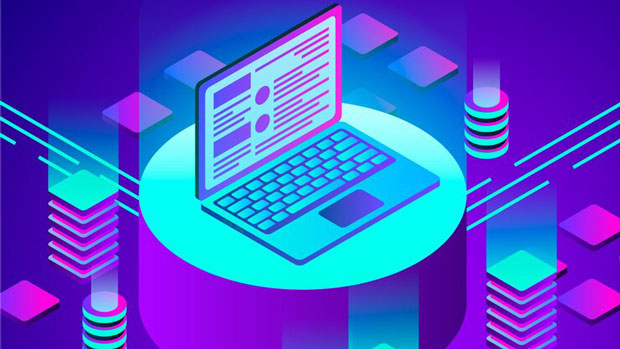Proxy servers play a pivotal role in modern networks, acting as intermediaries between client devices and the internet. They can help enhance security, improve speed, and offer various other advantages. However, for proxy servers to be effective, their stability is crucial. If a proxy server is unstable, it can lead to connectivity issues, security vulnerabilities, and slow performance, all of which can compromise the user experience. This article explores key strategies and best practices to improve the stability of proxy servers, ensuring they perform reliably and consistently over time. By focusing on various aspects such as hardware optimization, proper configuration, security measures, and monitoring, businesses and individuals can maintain a high-performance proxy server that minimizes downtime and disruptions. Understanding Proxy Server StabilityBefore diving into how to enhance the stability of proxy servers, it is important to first understand what makes a proxy server stable. Stability, in the context of proxy servers, refers to their ability to operate smoothly and consistently without frequent disruptions, crashes, or performance degradation. Factors such as network performance, server configuration, security, and resource management contribute significantly to the overall stability. An unstable proxy server can lead to issues like slow response times, connectivity failures, and even data breaches. Therefore, understanding the fundamental aspects of server stability is essential in finding the right solutions.1. Proper Hardware SelectionOne of the primary factors influencing the stability of a proxy server is the hardware it runs on. Insufficient or outdated hardware can significantly reduce the performance and reliability of the server. For high stability, ensure that the proxy server runs on robust hardware with enough processing power, memory, and storage to handle high traffic loads. Choosing high-performance processors, adequate RAM, and SSDs for storage can contribute to smoother operations and faster response times. Additionally, regular hardware maintenance and periodic upgrades are vital to ensuring that the server remains efficient and stable.2. Configuring the Server for Optimal PerformanceCorrect configuration is critical to achieving a stable proxy server. Misconfigured servers can lead to problems such as slow responses, frequent crashes, and network congestion. To optimize the server, administrators should configure network settings, cache management, and security protocols to meet the specific needs of the network environment. The proxy server should be set to efficiently handle incoming requests and manage traffic distribution effectively. For example, adjusting the connection timeout, buffer size, and handling concurrent connections can significantly improve server stability.3. Load Balancing for Improved StabilityLoad balancing plays a key role in enhancing the stability of proxy servers, especially in high-traffic environments. By distributing network traffic across multiple proxy servers, load balancing ensures that no single server is overwhelmed with requests, preventing performance degradation and crashes. Load balancing helps maintain consistent server performance even during peak usage times. Implementing automatic failover systems also ensures that if one proxy server becomes unavailable, others can immediately take over, minimizing downtime.4. Security Measures to Prevent DowntimeSecurity threats are a major cause of proxy server instability. Attacks such as Distributed Denial of Service (DDoS) can overwhelm the proxy server and lead to system crashes. To enhance the stability of the server, robust security measures must be implemented. These include firewalls, intrusion detection systems, and rate limiting to prevent malicious traffic from overwhelming the system. Regular software updates and patching are also necessary to protect the server from vulnerabilities that hackers might exploit. Additionally, the use of encryption protocols ensures that data exchanged through the proxy is secure and less likely to be intercepted or tampered with.5. Monitoring and Regular MaintenanceRegular monitoring and maintenance are essential for ensuring that a proxy server remains stable over time. Server performance should be continuously tracked to detect any unusual behavior, such as high resource usage, slow response times, or network failures. Real-time monitoring tools can provide insights into the server’s health, enabling administrators to address potential issues before they lead to downtime. Regular maintenance activities, such as software updates, log analysis, and hardware checks, help prevent technical issues from affecting server stability. Furthermore, proactive monitoring can help in identifying patterns that may indicate the server is at risk of failure, allowing for early intervention.6. Redundancy and Backup SystemsImplementing redundancy and backup systems is a critical strategy for improving proxy server stability. In the event of a server failure, redundancy ensures that there is a backup system in place to take over the workload. This can be achieved by setting up multiple proxy servers or using cloud-based services that offer automatic failover. Backup systems ensure that data is regularly stored and can be restored in case of any unexpected downtime. By having these failover mechanisms in place, organizations can ensure continuous service, even in the face of technical difficulties.7. Regular Testing and TroubleshootingTesting and troubleshooting are essential practices in maintaining proxy server stability. Regular testing allows administrators to identify any weaknesses or potential problems before they affect the server’s performance. Stress testing, load testing, and network diagnostics can help simulate heavy traffic loads and pinpoint areas of vulnerability. Additionally, troubleshooting tools can help identify and resolve issues with server configuration, hardware, and software. By adopting a proactive approach to testing and troubleshooting, businesses can ensure that their proxy servers remain stable and perform optimally.Improving the stability of proxy servers is a multifaceted task that requires attention to hardware, configuration, security, monitoring, and redundancy. By adopting best practices such as selecting appropriate hardware, optimizing server settings, implementing load balancing, ensuring robust security measures, and maintaining regular monitoring and backups, organizations can significantly enhance the stability of their proxy servers. A stable proxy server is essential for ensuring a reliable, fast, and secure user experience. By focusing on these strategies, businesses can mitigate the risks of server downtime and enhance their overall network performance, contributing to improved efficiency and customer satisfaction.
Apr 10, 2025
![arrow]()



























































